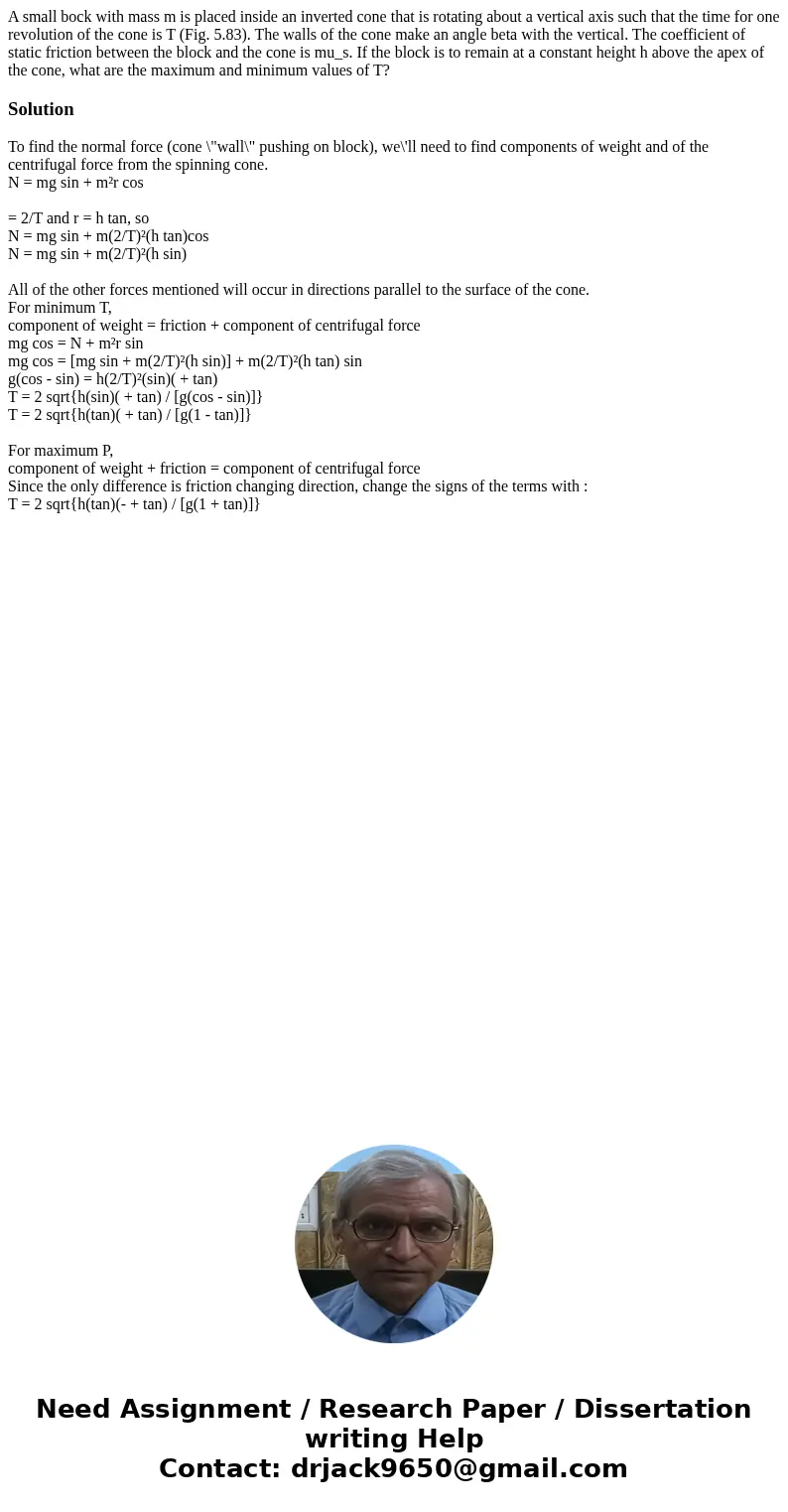A small bock with mass m is placed inside an inverted cone t
Solution
To find the normal force (cone \"wall\" pushing on block), we\'ll need to find components of weight and of the centrifugal force from the spinning cone.
N = mg sin + m²r cos
= 2/T and r = h tan, so
N = mg sin + m(2/T)²(h tan)cos
N = mg sin + m(2/T)²(h sin)
All of the other forces mentioned will occur in directions parallel to the surface of the cone.
For minimum T,
component of weight = friction + component of centrifugal force
mg cos = N + m²r sin
mg cos = [mg sin + m(2/T)²(h sin)] + m(2/T)²(h tan) sin
g(cos - sin) = h(2/T)²(sin)( + tan)
T = 2 sqrt{h(sin)( + tan) / [g(cos - sin)]}
T = 2 sqrt{h(tan)( + tan) / [g(1 - tan)]}
For maximum P,
component of weight + friction = component of centrifugal force
Since the only difference is friction changing direction, change the signs of the terms with :
T = 2 sqrt{h(tan)(- + tan) / [g(1 + tan)]}

 Homework Sourse
Homework Sourse